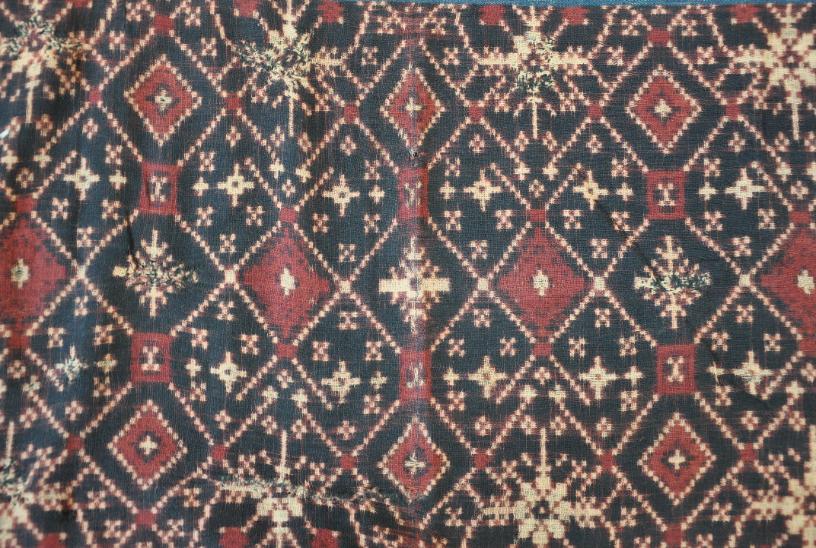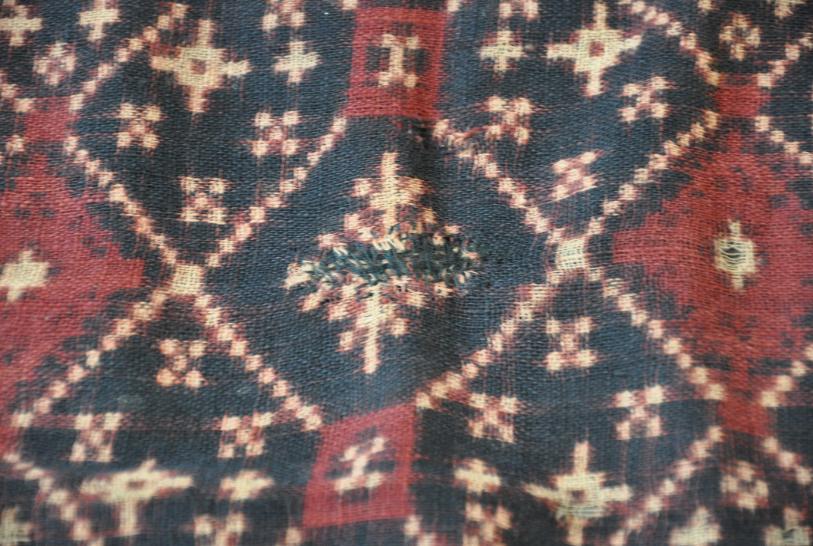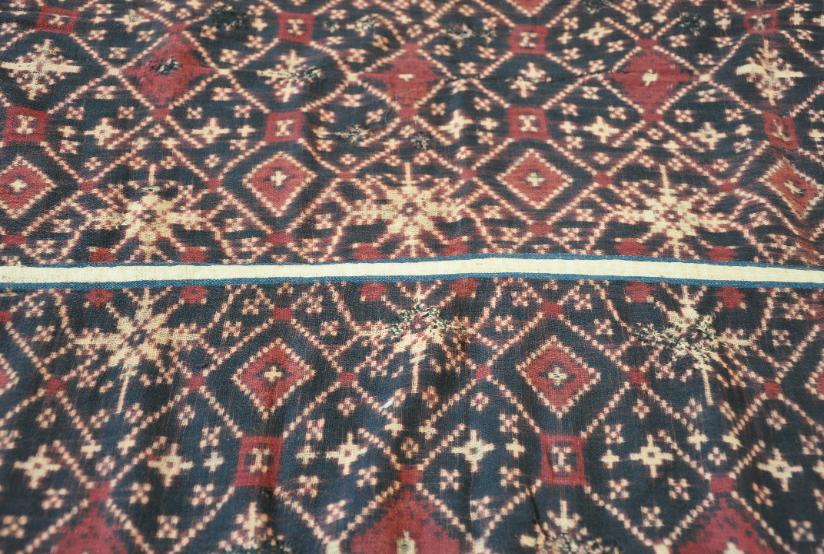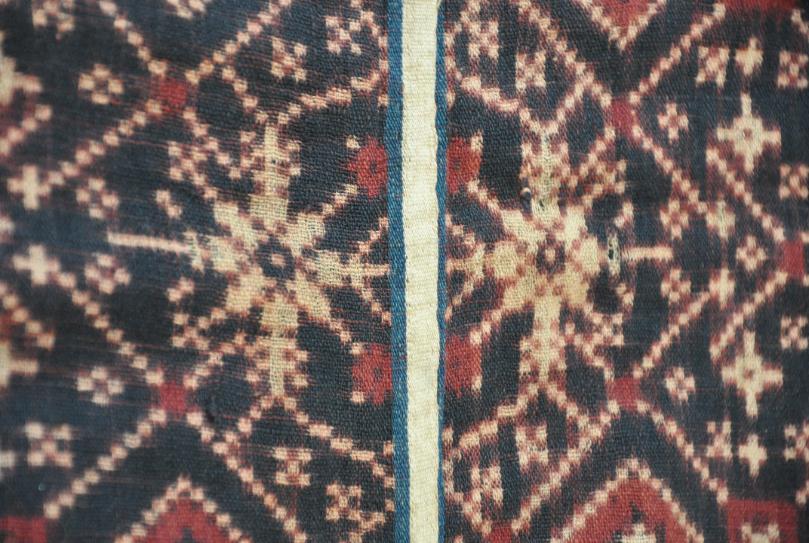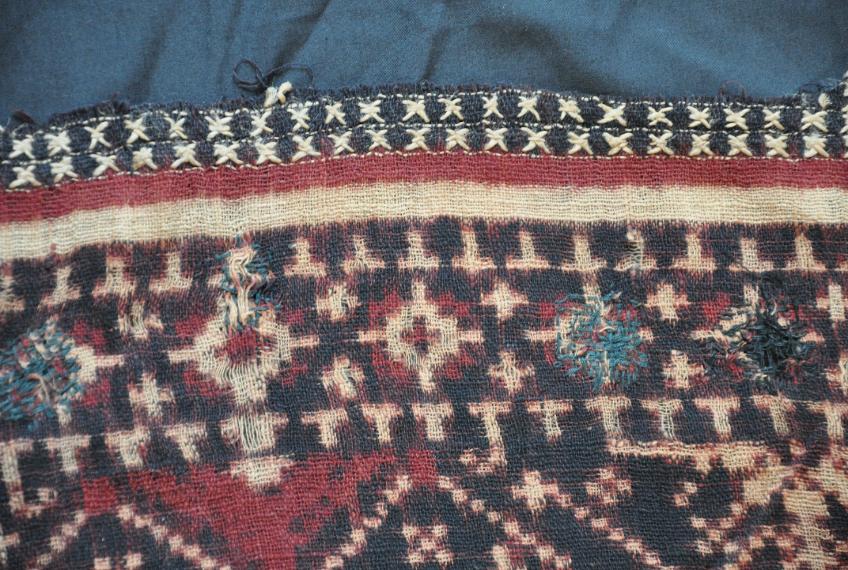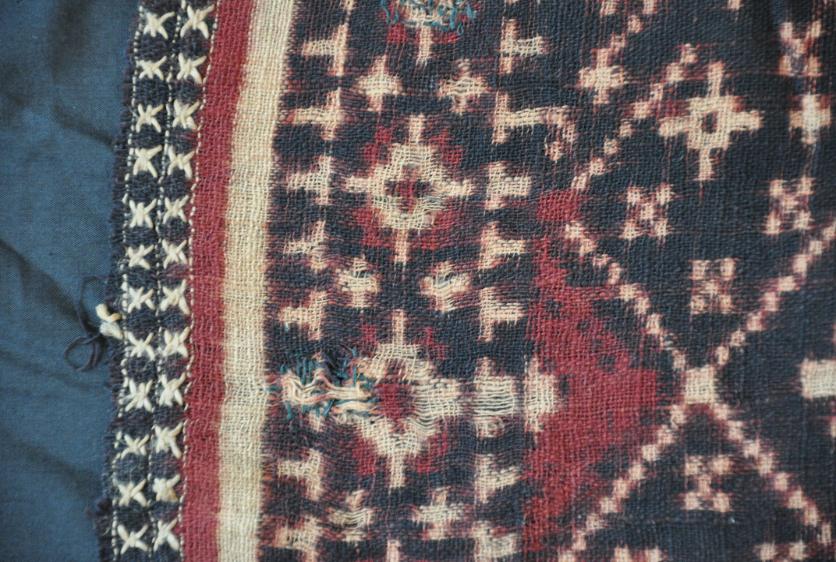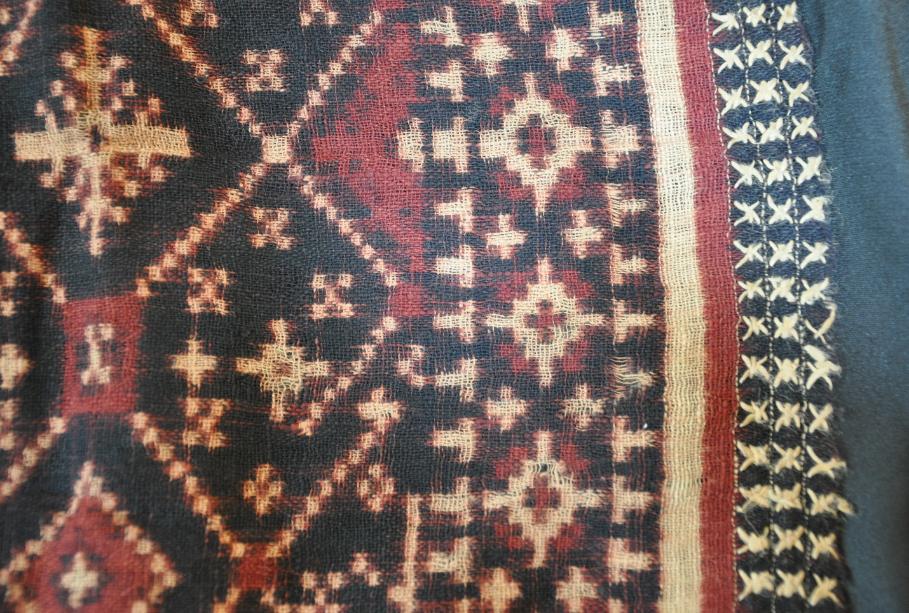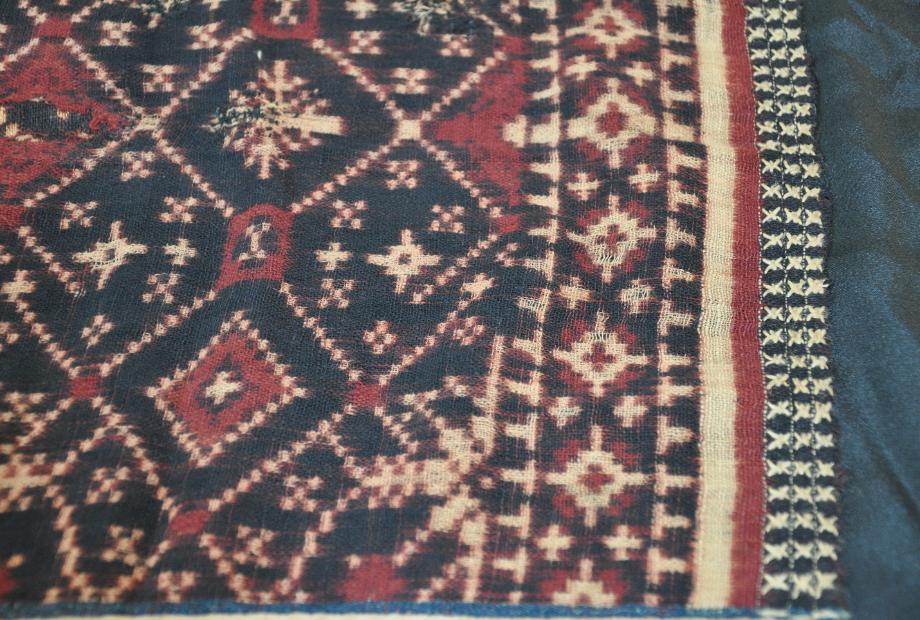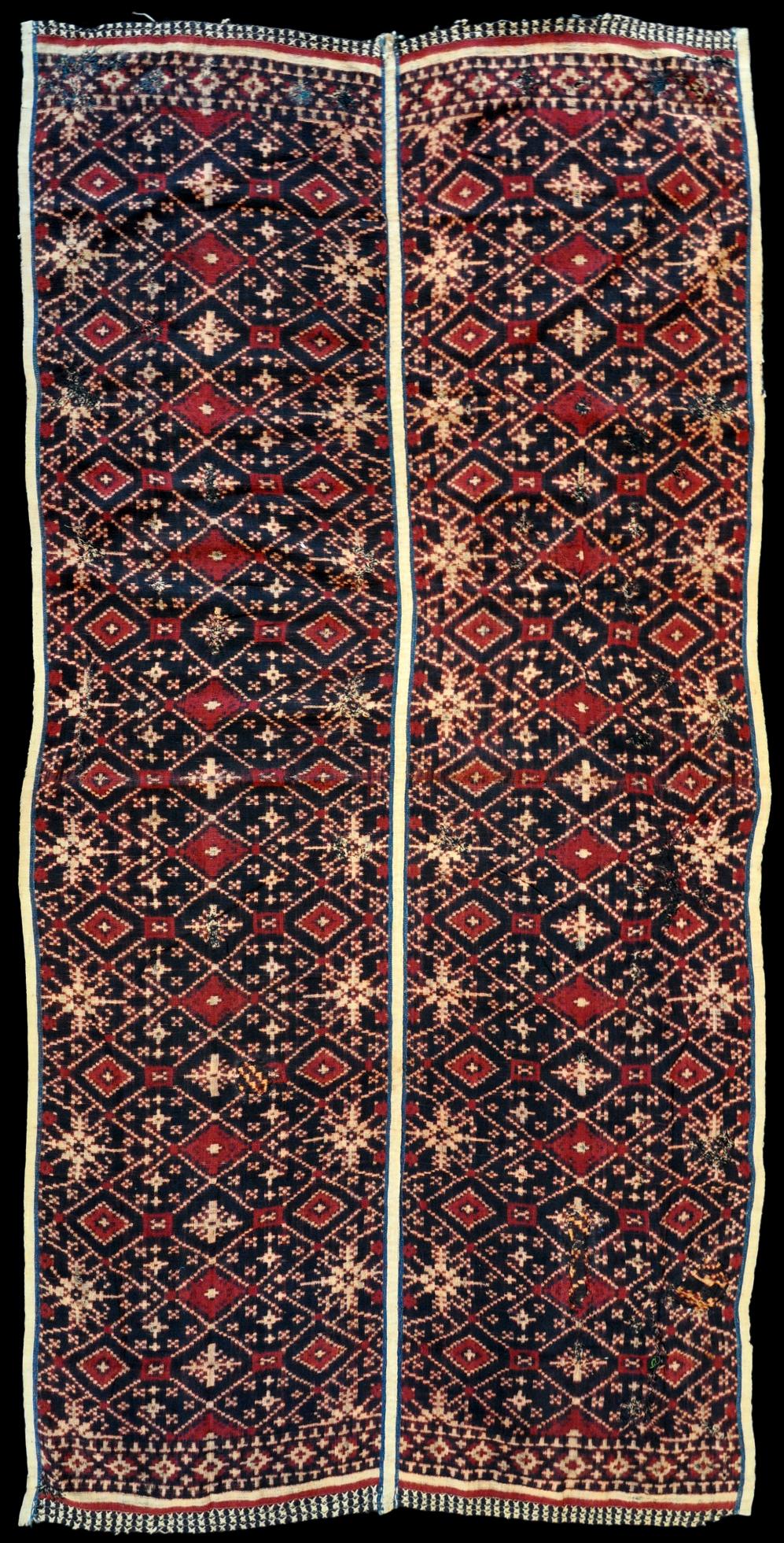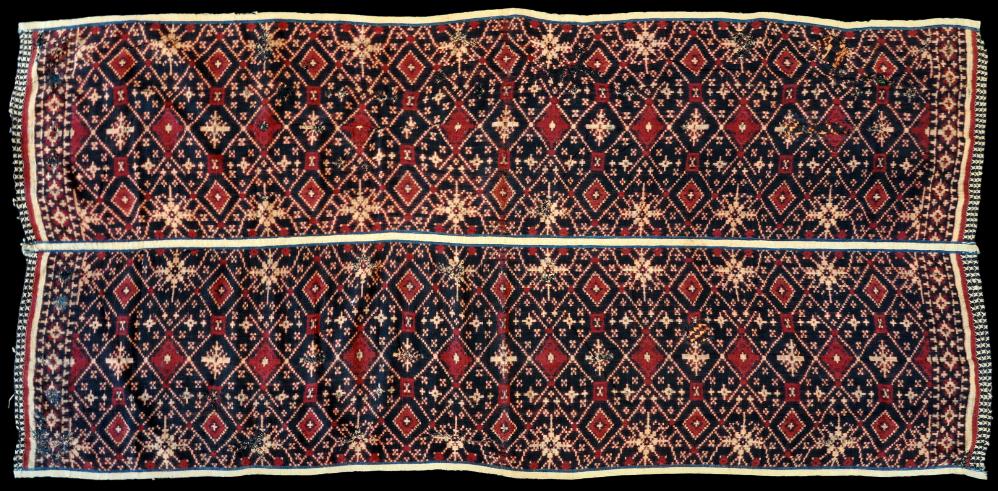
Patola-Design Double-Ikat Geringsing Textile, Bali
Patola-Design Double-Ikat Geringsing Textile
Bali, Indonesia
19th century
length: 161cm, width: 72cm
This full length of geringsing cloth comprises two panels that have been sewn together. The colours are still quite bright, and there are ample old, native repairs to the cloth befitting its sacred, heirloom status. Geringsing cloth is the much fabled cloth from one particular village in Bali – the village of Tenganan Pegeringsingan in north-east Bali, which is noteworthy not only for this rare cloth but for its unusual customs which set it apart from other Balinese villages and communities. Geringing is regarded as a sacred cloth, not just in Tenganan, but across Bali, and was widely ascribed supernatural properties, particularly in assisting with healing and even with exorcism (Guy, 2009, p. 96).
The cloth here follows the patola pattern – patola was a double ikat trade cloth produced in Gujarat in India, and was much sought after in Indonesia. Officials of the Dutch East India Company (VOC) realised in the early 17th century that they could pay for spices in what became known as the Dutch East Indies with certain types of colourful patola cloth produced in India. Indian patola was favoured by the nobility across Indonesia and indeed became a prerogative among many such ruling groups.
The production of geringsing – much of it based on patola as is the case with the cloth here – became a speciality of the villages of Tenganan Pegeringsingan.
The villagers of Tenganan are among a group known as Bali Aga, or ‘original Bali’. They worship Indra and consider themselves to be quite separate to conventional Balinese, as do other Balinese. Their culture appears to be a form of pre-Majapahit Balinese culture. It is very insular. The village is small and walled. Villagers must marry within the village; those who do not are forced to live outside its walls.
Geringsing is a double-ikat cloth, meaning that it is a highly complex and laborious textile to produce, hence its expense even when bought new. It requires the resist dyeing of both the warp and the weft threads in such a way that when combined in plainweave they both contribute to the desired pattern.
The villagers view the ability to weave geringsing as instrumental to their identification as members of the community. Traditionally, different patterns were worn for different important ceremonies. The ceremonial nature of the cloth means that women are forbidden to be involved in its manufacture while menstruating.Gerinsing cloth is always relatively narrow – it is woven on narrow backstrap looms. It is made from loosely woven, home- or handspun cotton and the traditional rust hues of the cloth are derived from vegetable dyes, including a red dye from the roots of the noni tree (morinda citrifolia). Before dyeing the threads are soaked in a candle nut oil, wood ash and water mixture and then laid out to dry in the sun. This process can be repeated up to twelve times to enhance the penetration of the dye. The actual weaving is a painstaking process given that the weft and the warp must be separately dyed and precisely matched.
There are around twenty different geringsing patterns; they are mainly geometric with floral components, such as the example shown here.
The condition of this example is relatively good. There a number or repairs, as mentioned, and these are probably on account of its sacred status – the textile was too important ritually to be discarded. It has remained bright with little fading.
Examples of geringsing are to be found in important museum textile collections including in that of the National Museum, Jakarta, and the National Gallery of Australia.
References
Barnes, R., & M. Hunt Kahlenberg (eds), Five Centuries of Indonesian Textiles: The Mary Hunt Kahlenberg Collection, Delmonico Books, 2010.
Gillow, J., Traditional Indonesian Textiles, Thames & Hudson, 1995.
Guy, J., Indian Textiles in the East: From Southeast Asia to Japan, Thames & Hudson, 2009.
Maxwell, R., Textiles of Southeast Asia: Tradition, Trade and Transformation, Periplus, 2003.
Reichle, N. (ed.), Bali: Art, Ritual & Performance, Asian Art Museum, 2010.
Provenance
Acquired in the UK, from the estate collection of Dr George Yuille Caldwell (1924-2016). Dr Caldwell, an English-born physician moved to Singapore in the 1950s, from where he built up a collection of Indonesian textiles and other ethnographica.
Inventory no.: 3826
SOLD

